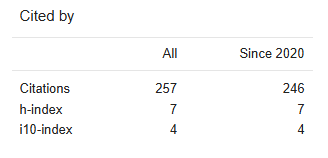Paper Details


Call For Papers
Volume 06, Issue 12
Frequency: 12 Issue per year
Paper Submission: Throughout the Month
Acceptance Notification: Within 2 days
Areas Covered: Multidisciplinary
Accepted Language: Multiple Languages
Journal Type: Online (e-Journal)
Announcement

Publish books with ISBN Number
- Edited Book
- Text Book
- Ph.D Thesis
- Conference Proceedings
ISSN Number:
2582-8568
Journal DOI No:
03.2021-11278686
Title:
Multi-Hazard Vulnerability Assessment of North Kashmir-An Analysis to Evaluate Disaster Risk for Better Management of Disasters and Building Capacity in the Region
Authors:
Cite this Article:
,
Multi-Hazard Vulnerability Assessment of North Kashmir-An Analysis to Evaluate Disaster Risk for Better Management of Disasters and Building Capacity in the Region, International Research Journal of Humanities and Interdisciplinary Studies (www.irjhis.com), ISSN : 2582-8568, Volume: 6, Issue: 9, Year: September 2025, Page No : 24-40,
Available at : http://irjhis.com/paper/IRJHIS2509003.pdf
Abstract:
Multi-hazard approaches for risk assessment are applied in two ways: First we need to study single hazards in each area before combining our results. The level of impact between a hazard and vulnerable entities at risk depends on the identified weak points. Due to distinct natural terrain Jammu & Kashmir encounters multiple kinds of risks which make it difficult to manage untoward events. North Kashmir in the Himalayan seismic zone experiences various natural threats including earthquakes floods landslides and snowslides. Through extensive hazard analysis this project measures risks from different disasters to suggest specific protective actions. This research measures vulnerability through combinations of poverty levels, population growth numbers, human settlement trends, forestry losses, environmental stress, climate effects, public understanding gaps, direct field checks and local stakeholder insight. It takes together both physical landscape threats and societal impacts to generate a multi-risk vulnerability scale. The research shows major differences in disaster risk between particular districts and villages showing us the necessity to plan local disaster protection. Our research supports better management of disasters in North Kashmir while also building stronger communities that withstand risks better.
Keywords:
Multi-hazard vulnerability, disaster risk reduction, Himalayan seismic zone, poverty, resilience, climate change.
Publication Details:
Published Paper ID: IRJHIS2509003
Registration ID: 22043
Published In: Volume: 6, Issue: 9, Year: September 2025
Page No: 24-40
ISSN Number: 2582-8568
Download Full Paper: Click Here
Article Preview:





